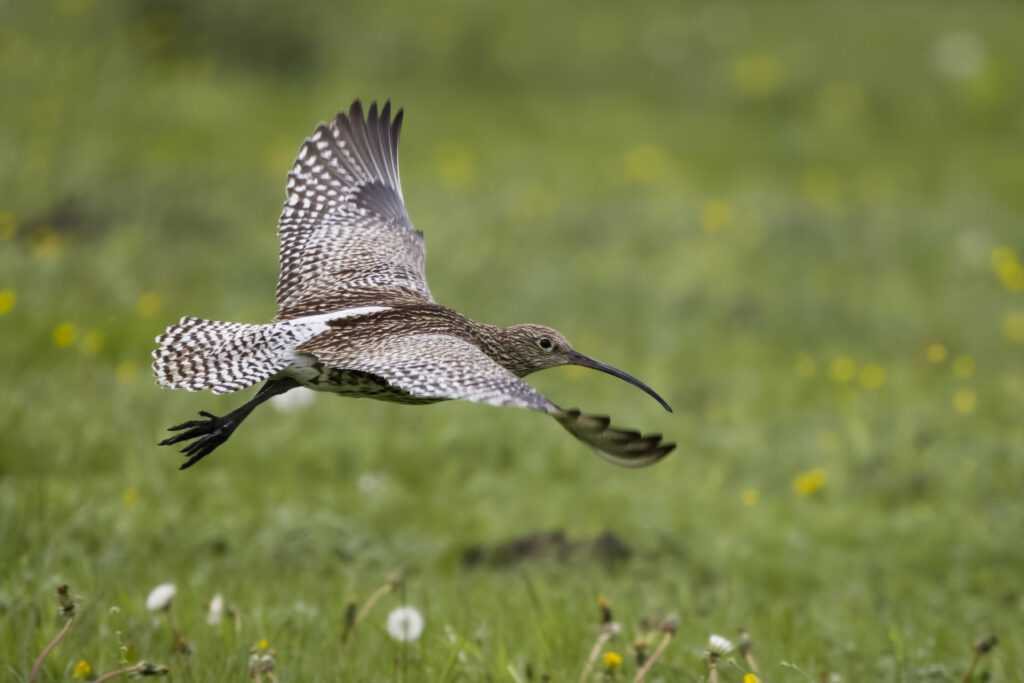
The iconic and much-loved Eurasian Curlew is in serious decline. The curlew’s distinctive call signals spring like no other, but the UK population has fallen by a staggering 48% over a 25-year period between 1995 and 2020 and added to the UK red list for threatened species with the highest conservation priority in 2015.
They’re a familiar sight across Nidderdale National Landscape, however, while adult curlews return to the area each February, their presence is likely masking a sharp decline in breeding success here too.
It is tempting to assume that because we see numbers of adult curlews, populations are stable. But what really matters is the number of fledged chicks at the end of summer – those are the birds that will sustain the population in the future.
A recent study shows that breeding success on farms is poor; the curlews we see are largely likely to be mature adults without enough young to replace them. If this trend continues, we could face a sudden and catastrophic decline.
Without concerted effort, Nidderdale National Landscape’s curlews could follow the same trajectory. Parts of England, such as Dartmoor, are already seeing the possibility of local extinction. Research by the Northern Upland Chain Local Nature Partnership (NUC LNP) highlights Nidderdale National Landscape’s importance: 49% of England and Wales’ breeding curlew population is found within just 4.9% of the land area, including Nidderdale National Landscape.
Yet despite this, breeding failures are widespread, largely due to farming intensification, landscape changes, and increased predation.
We need your help to save the curlew
Everyone in the National Landscape can help.
Keep dogs on short leads. During breeding season, ground-nesting birds are highly vulnerable to disturbance.
Donate! Your donation will directly support curlew conservation projects.
Spread the word. If you live near a nesting site or own land with footpaths, put up polite signs to alert walkers. Nidderdale National Landscape and Curlew Action can provide ready-made signs, or you can design your own.
Write to newspapers and MPs. Public awareness and political action are crucial for securing better conservation policies.
Volunteer for fieldwork. Whether you’re an expert or a beginner, there are plenty of ways to get involved in monitoring and conservation efforts.
Contact [email protected] for more information.
Farmers and Land Managers – did you know?
Curlews thrive in traditional farmland settings, and simple changes can make a huge difference:
The National Landscape team can provide advice on conservation and regenerative practices that benefit both curlew and farm resilience.
We can connect landowners with curlew conservation volunteers.
Grant funding is available for equipment like nest fences and cameras.
We can help farmers access agri-environment schemes as they become available.
Contact [email protected] for more information.
National statistics show the decline in curlew populations is stark…
The breeding population has nearly halved since the mid-1990s.
In mainland Ireland, the number of nesting pairs has plummeted from 150,000 in the 1960s to just 150 today.
Breeding curlews are predicted to be extinct in Wales by 2033.